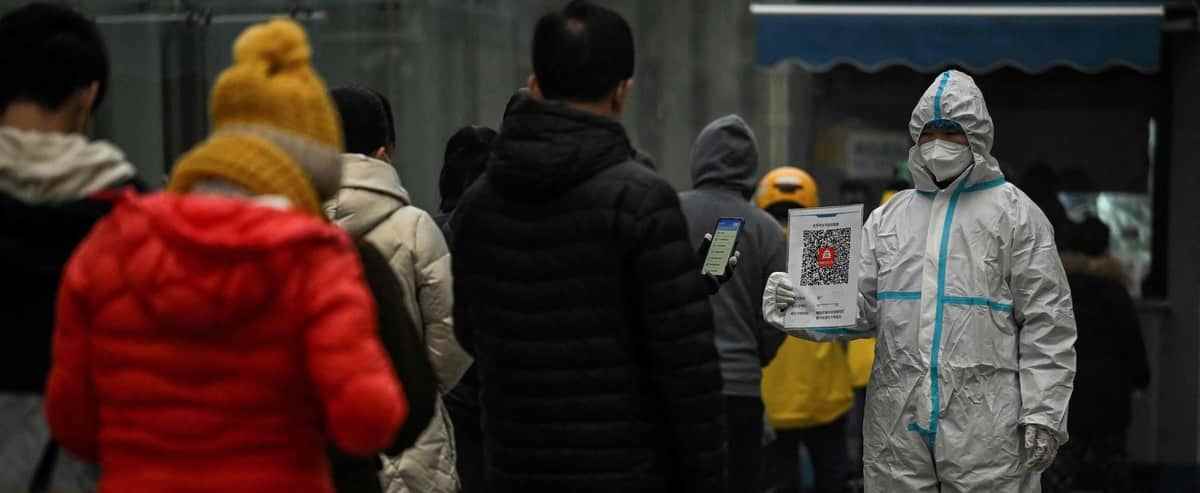Confined megalopolises, restaurants and schools closed in Beijing: after having seemed to let go of the ballast, the Chinese authorities are starting again with a vengeance in their zero COVID policy, despite its devastating effects for the economy.
The last great power to carry out this strategy in the face of COVID, China now seems to be at an impasse while popular discontent is mounting, note several specialists interviewed by AFP.
“Most officials in China know that the policy as it is conducted no longer makes sense, but no one can fail to implement it, because it is (President) Xi’s (Jinping’s) policy and it must be maintained”, explains Steve Tsang, director of the SOAS China institute at the University of London.
So, “we see certain adjustments, but they are not made sufficiently clearly”.
Not long ago, relief seemed to be on the horizon: on November 11, the government unveiled a series of relaxations, including a reduction in quarantines, in particular for travelers arriving from abroad.
Several Chinese cities also stopped large-scale testing last week.
The respite was short-lived. In recent days, the number of cases has exploded, approaching 30,000 (the vast majority asymptomatic).
A minimal figure compared to the Chinese population (1.4 billion) and those recorded in other major countries, but which is close to the record reached in the spring, during the confinement of Shanghai.
popular anger
Immediately, large-scale PCR confinements and tests returned, with Beijing notably closing many schools, restaurants, sports halls and tourist sites.
Enough to gag investors, euphoric after the hopes of easing zero COVID and which are now looking gray.
There are no “signals that (Chinese) top leaders are ready to abandon zero COVID soon,” observes Yanzhong Huang, a health expert at the Council on International Relations, a US think tank.
“The incentive mechanism (to apply zero COVID) for local governments has not really changed despite the new adjustments,” he adds, pointing out that in the event of a new outbreak, it is always the leaders in charge. lower levels which are singled out.
In the Chinese population, annoyance is felt. Recently, hundreds of residents in Canton (south) clashed with the police after the extension of confinement.
“In fact, the anger comes from ordinary people, and also from local officials”, exasperated to see their resources and their time almost solely devoted to zero COVID, explains to AFP Alfred Wu, associate professor at the School of Public Policy. Lee Kuan Yew in Singapore.
Long reopening
So, should we maintain this strategy or not?
For Mr. Huang, another year of zero COVID would lead to “deregulation of the Chinese economy and could cause social tensions to reach a breaking point, which would threaten the stability of the regime and could even cause a crisis of legitimacy”.
But conversely, opening the country too quickly is also risky, because China could “be faced with a viral wave accompanied by mass mortality, which would quickly overwhelm its fragile health system”, he warns.
By mid-August, only 85% of residents over 60 had received two doses of a Chinese vaccine. None of the RNA vaccines – said to be more effective – have yet been approved by local authorities.
The road to reopening will be “long and strewn with pitfalls”, say analysts at Japanese bank Nomura.
“Reopening could be back and forth, as policymakers could backtrack if they see a rapid rise in cases and social disruption,” they predict.
It is also difficult for the Chinese authorities to send a reassuring message towards a return to normal, after having hammered for almost three years that the virus was necessarily fatal.
“The chilling propaganda about the virus and the fact that other countries have fared worse than China, ironically, is now playing against Communist Party leaders who might be keen to relax very anti-Covid measures. invasive and costly,” said Fei-Ling Wang, professor of international affairs at Georgia Tech in the United States.
And “a rapid reversal towards an opening of the country would risk making the leaders lose face”.


